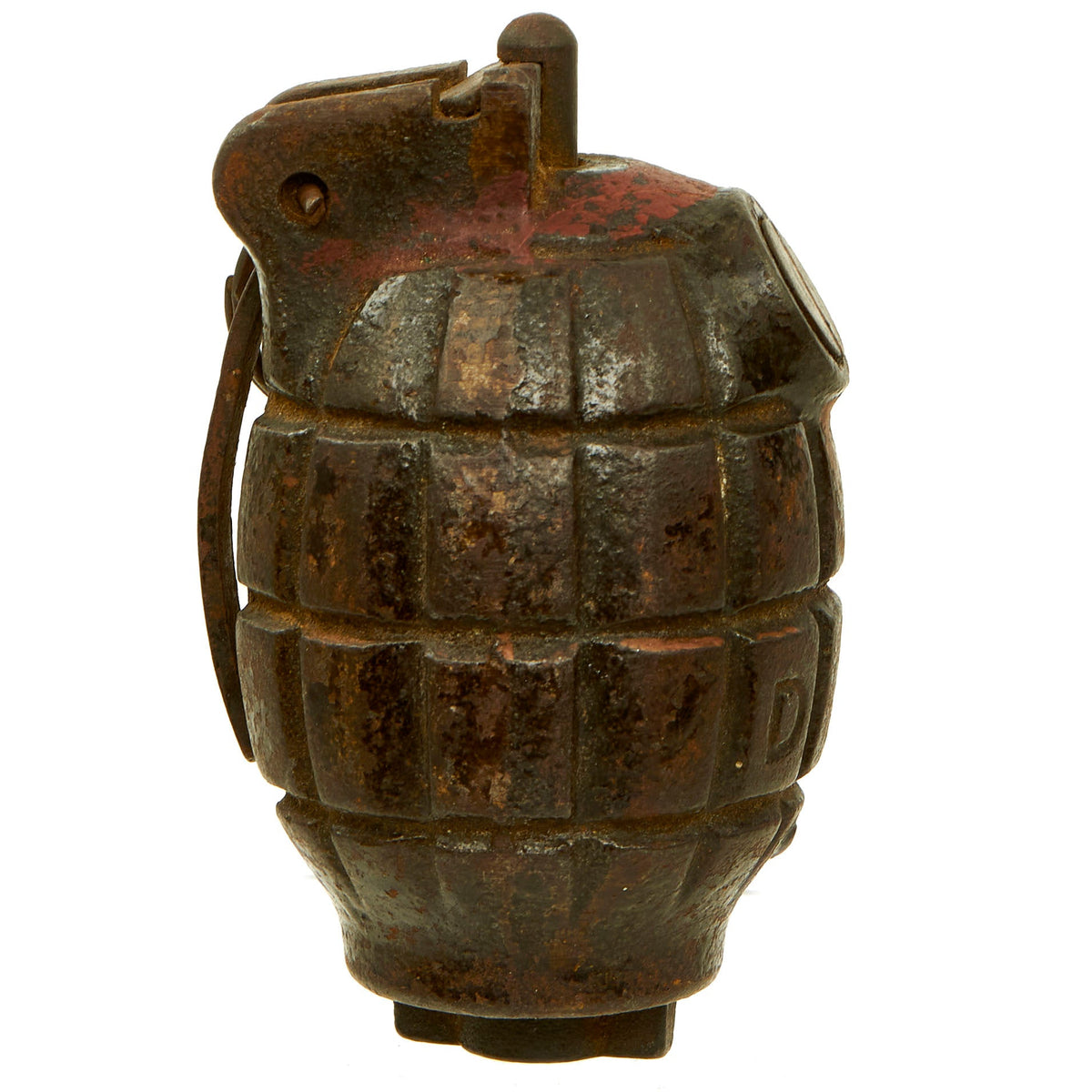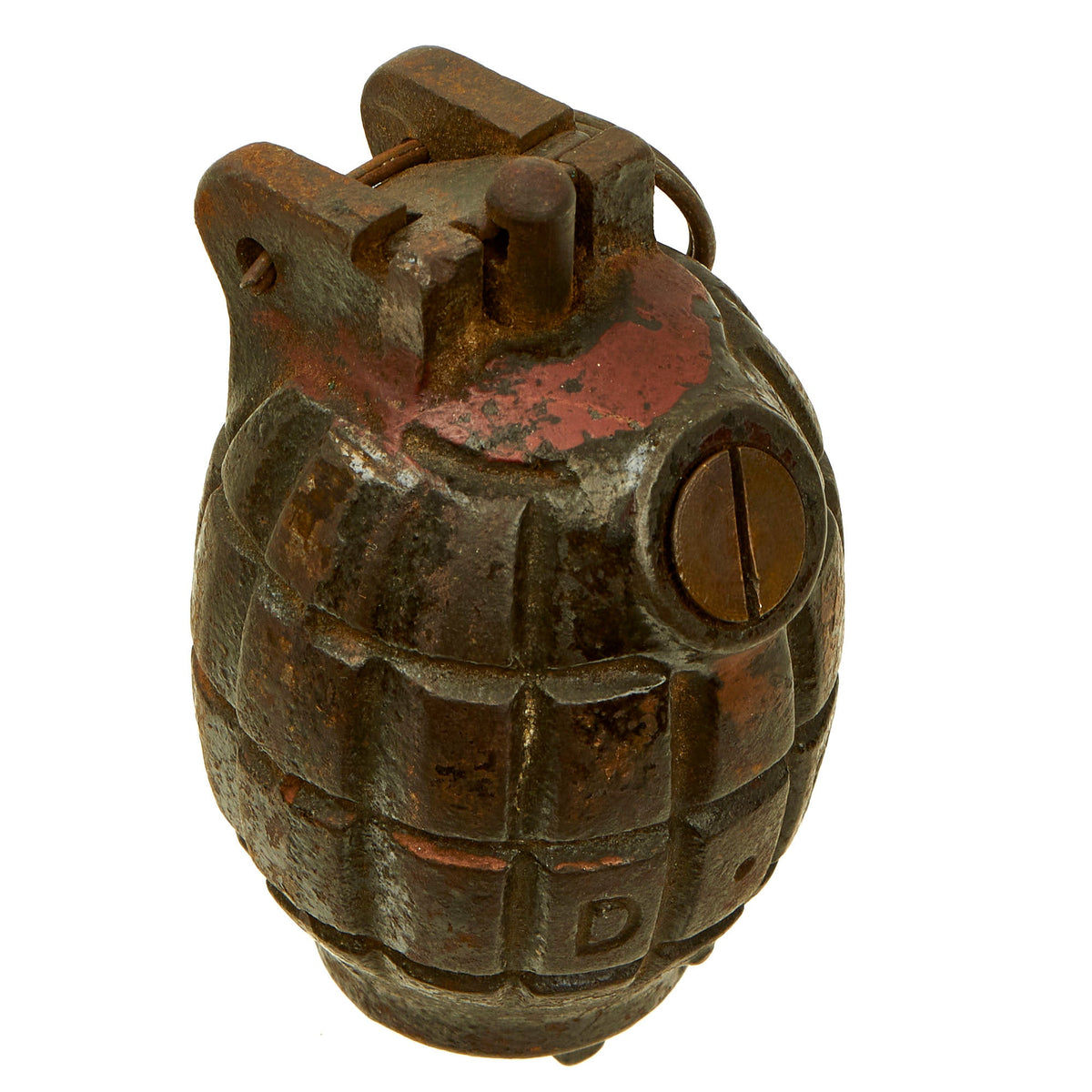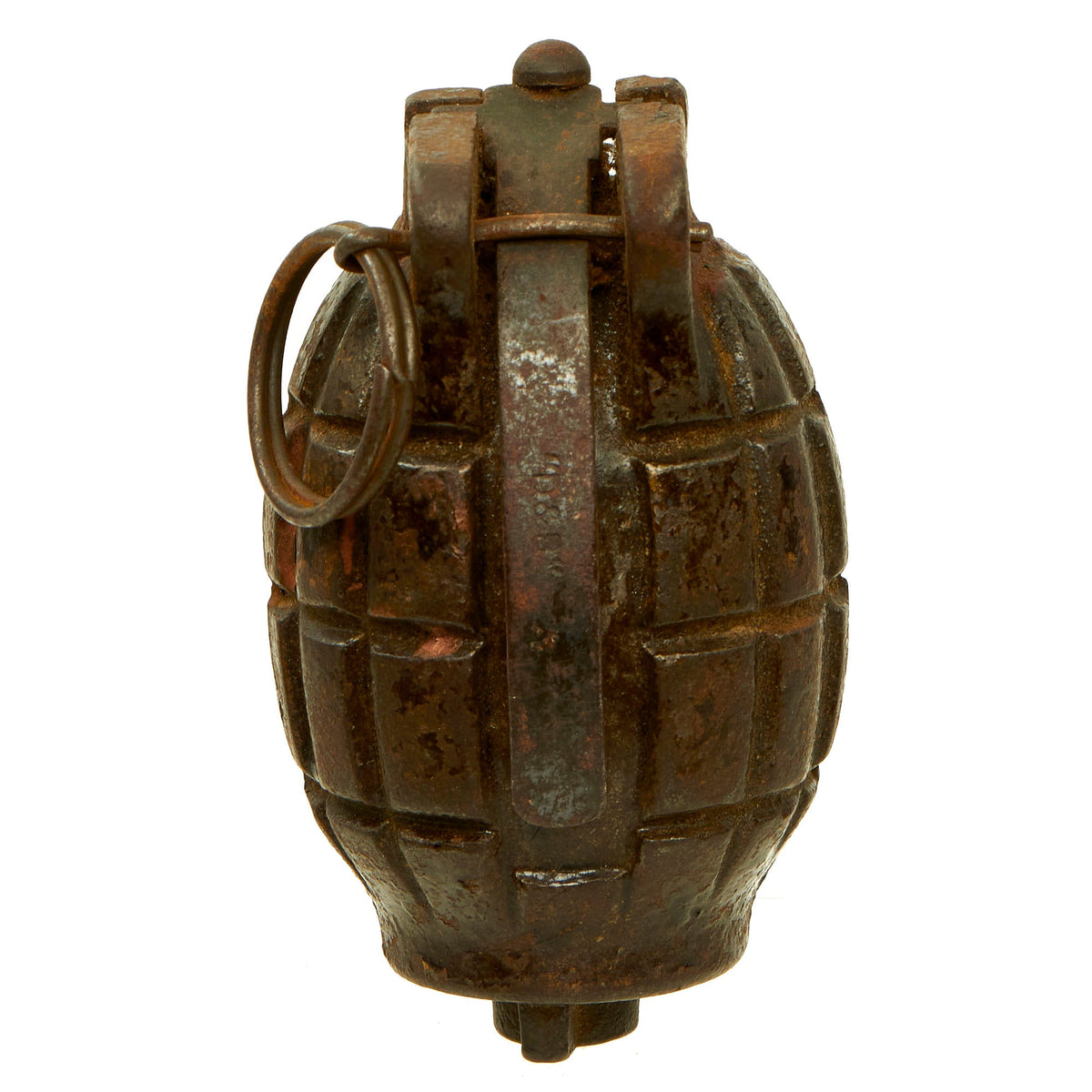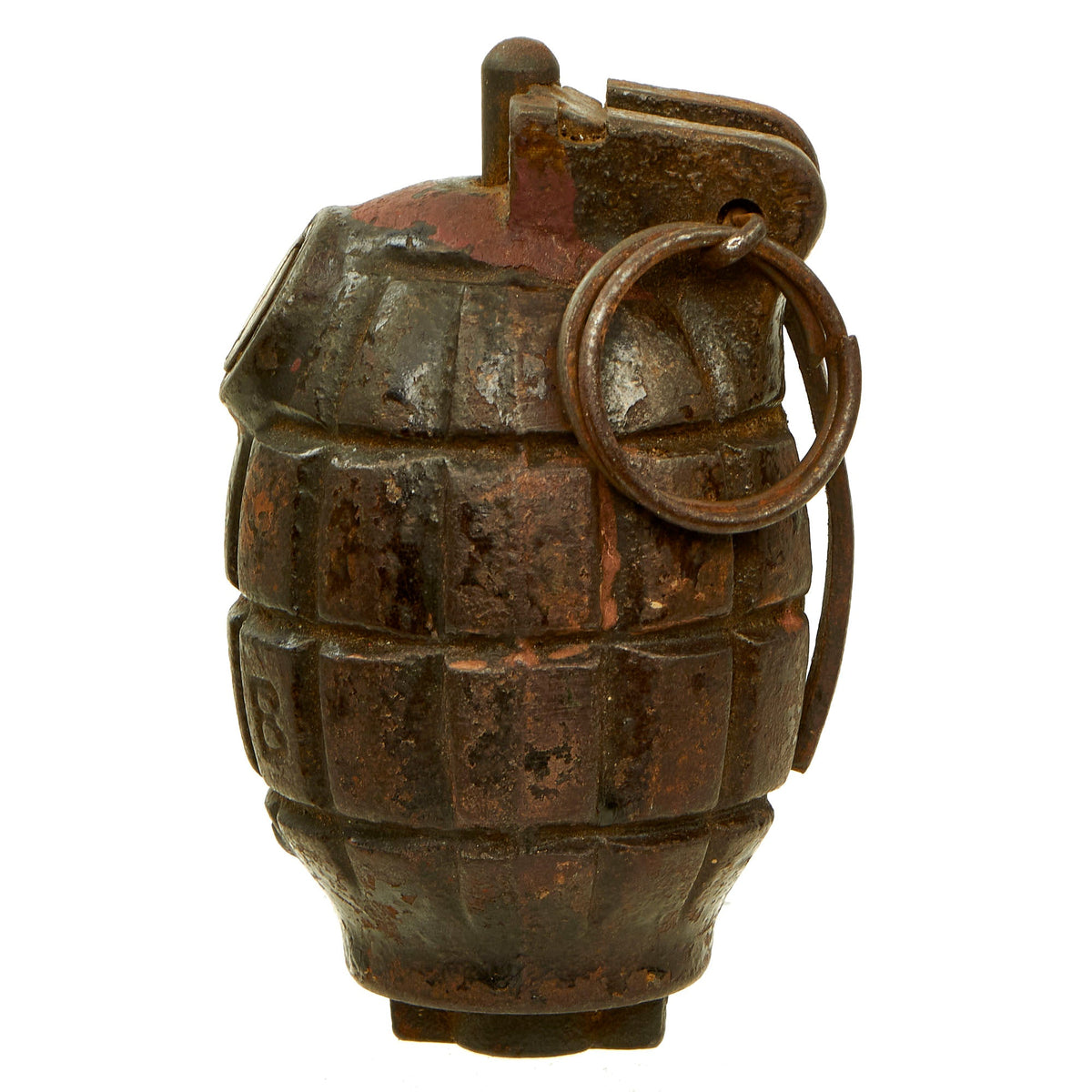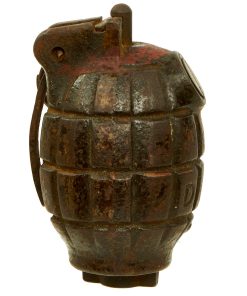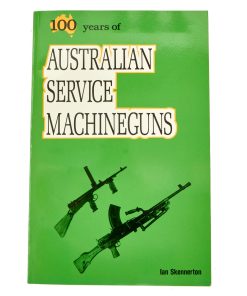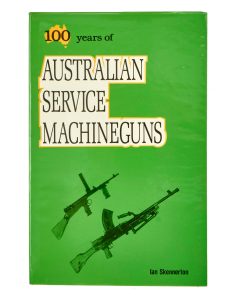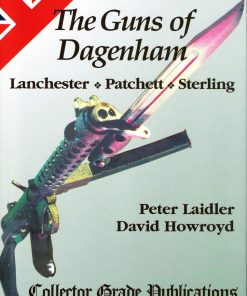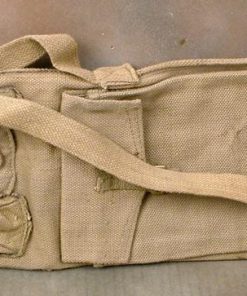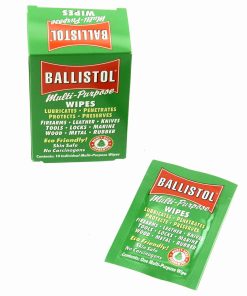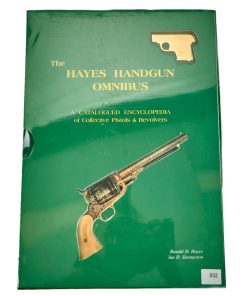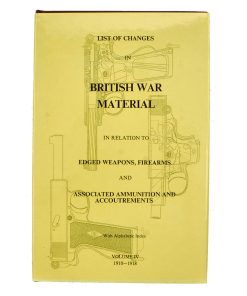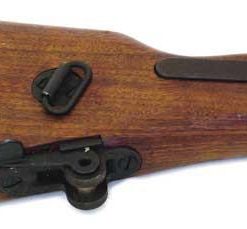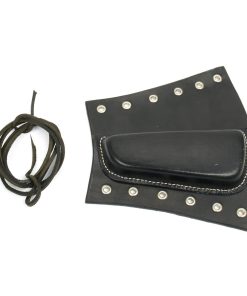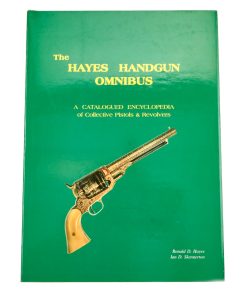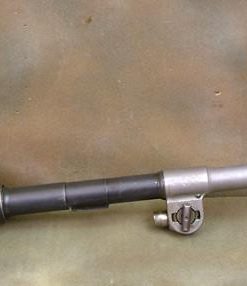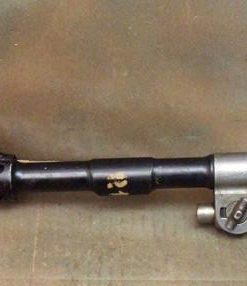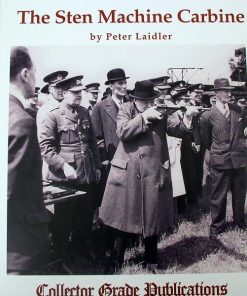Original British WWI Inert Mills Bomb No. 23 MKII Grenade by Dobson and Barlow – All Parts Marked D&B Original Items
$ 495,00 $ 148,50
Original Item: Only One Available. This is a very nice example of a (No 5) No. 23 MkII “Mills Bomb” Grenade. This is the first version of the “Mills Bomb” produced, and was one of the standard grenades used by British forces during WWI. This wonderful example is complete with internal parts including the spring loaded ignition (no explosives!) and the original pull pin.
Unloaded or dummy grenades, artillery shell casings, and similar devices, which are cut or drilled in an BATF-approved manner so that they cannot be used as ammunition components for destructive devices, are not considered NFA weapons. This example is in total compliance and is NOT AVAILABLE FOR EXPORT.
The No. 23 Mk 1, the hand/rifle-grenade had a base plug drilled with a threaded hole for a rifle launching rod. The No. 23 Mk II had a new-style iron base plug that was easier to tighten with the fingers without the need for a spanner. The No. 23 Mk III was a new-style body with a larger filler hole plug and more solid -lever lugs/ears but retaining the Mk II style plug.
The body of the grenade, spoon and base plug are all marked with D B for Dobson and Barlow Ltd of Bolton. Dobson and Barlow were manufacturers of textile machinery with works in Bolton, Greater Manchester. Isaac Dobson founded the company in 1790 and by 1850 Dobson in partnership with Peter Rothwell had premises in Blackhorse Street which produced mules for cotton spinning. The company moved to a larger factory in Kay Street which had 1,600 workers in 1860.
During World War I the company withdrew from textile machinery manufacture and became one of the largest manufacturers of munitions in the area, making hand grenades, artillery shells, field kitchens, mobile workshops, naval mines and search lights.
Ready to display!
The Mills Bomb:
Mills bomb is the popular name for a series of prominent British hand grenades. They were the first modern fragmentation grenades used by the British Army and saw widespread use in World War I.
William Mills, a hand grenade designer from Sunderland, patented, developed and manufactured the “Mills bomb” at the Mills Munition Factory in Birmingham, England, in 1915. The Mills bomb was inspired by an earlier design by Belgian captain Leon Roland. Roland and Mills were later engaged in a patent lawsuit. Col. Arthur Morrow, a New Zealand Wars officer, also believed aspects of his patent were incorporated into the Mills Bomb. The Mills bomb was adopted by the British Army as its standard hand grenade in 1915, and designated the No. 5.
The Mills bomb underwent numerous modifications. The No. 23 was a variant of the No. 5 with a rodded base plug which allowed it to be fired from a rifle. This concept evolved further with the No. 36, a variant with a detachable base plate to allow use with a rifle discharger cup. The final variation of the Mills bomb, the No. 36M, was specially designed and waterproofed with shellac for use initially in the hot climate of Mesopotamia in 1917, but remained in production for many years. By 1918 the No. 5 and No. 23 were declared obsolete and the No. 36 (but not the 36M) followed in 1932.
The Mills was a classic design; a grooved cast iron “pineapple” with a central striker held by a close hand lever and secured with a pin. According to Mills’s notes, the casing was grooved to make it easier to grip and not as an aid to fragmentation, and in practice it has been demonstrated that it does not shatter along the segmented lines. The Mills was a defensive grenade (meant to be thrown from behind cover at a target in the open, wounding with fragmentation, as opposed to an offensive grenade, which doesn’t fragment, relying on short-ranged blast effect to wound or stun enemy troops without endangering the exposed thrower with fragments, which travel a much longer distance than blast alone. With fragmenting defensive grenades, after throwing the user had to take cover immediately (however, in spite of the designations, “defensive” grenades were frequently used offensively, and vice versa. A competent thrower could manage 15 meters (49 feet) with reasonable accuracy,[citation needed] but the grenade could throw lethal fragments farther than this. The British Home Guard were instructed that the throwing range of the No. 36 was about 30 yards with a danger area of about 100 yards.
At first the grenade was fitted with a seven-second fuse, but during combat in the Battle of France in 1940 this delay proved to be too long, giving defenders time to escape the explosion, or even to throw the grenade back, and was reduced to four seconds.
The heavy segmented bodies of “pineapple” type grenades result in an unpredictable pattern of fragmentation. After the Second World War Britain adopted grenades that contained segmented coiled wire in smooth metal casings. The No. 36M Mk.I remained the standard grenade of the British Armed Forces and was manufactured in the UK until 1972, when it was completely replaced by the L2 series. The 36M remained in service in some parts of the world such as India and Pakistan, where it was manufactured until the early 1980s. Mills bombs were still being used in combat as recently as 2004 e.g. the incident which killed US Marine Jason Dunham and wounded two of his comrades.
Models:
The No. 5 Mk. 1 was the first version. The explosive was filled through a small circular plug on the upper half, the detonator assembly was inserted into the centertube of the mills through the bottom of the grenade body via the baseplug, the striker and spring is held in tension through the middle by the lever that was held down on the lugs (ears) located on the top of the grenade body via a split pin and ring called the safety pin/ pullring. It was first issued in May 1915 and entered general issue when mass production caught up a year later in 1916.
The No. 23 Mk. 1, the hand/ rifle-grenade ‘ had a baseplug drilled with a threaded hole for a rifle launching rod . The No. 23 Mk.II had a new style iron baseplug that was easier to tighten with the fingers without the need for a spanner.the No. 23 MkIII was a new style body with a larger filler hole plug and more solid lever lugs/ears but retaining the MkII style plug.
The No. 36 Mk. 1 was first introduced in May 1918. It used the No. 23 MkIII body but a new style plug. Mostly made of iron and was drilled and threaded for attaching a metal disk called a gas check that made the grenade launchable from a cup discharger (Burns) mounted on a rifle’s muzzle and launched using a balastite blank cartridge . The shellac-coated “Mesopotamian” variant (No. 36M MkI) was designed to keep moisture and humidity out of the detonator’s fuse. The No. 36M MkI was the British army’s standard hand-grenade from the 1930s to 1972.
Identification marks
A green band around the middle originally indicated an Amatol filling (1915–1920s), while it later indicated a Baratol or Trotyl filling (1920s–1970s).
A pink band around the middle indicates an Ammonal or Alumatol filling. (Alumatol is defined by the Dictionary of Explosives, pub 1920[8] as ‘a mixture of ammonium nitrate, TNT and ‘a small quantity’ of aluminum power.)
A red band around the base plug on the bottom indicated the detonator was already installed and that the grenade was live.
Three red Xs along each side indicates that it is the waterproofed No.36M model.
Fast Shipping with Professional Packaging
Thanks to our longstanding association with UPS FedEx DHL, and other major international carriers, we are able to provide a range of shipping options. Our warehouse staff is expertly trained and will wrap your products according to our exact and precise specifications. Prior to shipping, your goods will be thoroughly examined and securely secured. We ship to thousands clients each day across multiple countries. This shows how we're dedicated to be the largest retailer on the internet. Warehouses and distribution centres can be located throughout Europe as well as the USA.
Note: Orders with more than one item will be assigned a processing date depending on the item.
Before shipping before shipping, we'll conduct a thorough inspection of the items you have ordered. Today, the majority of orders will be delivered within 48 hours. The delivery time will be between 3-7 days.
Returns
The stock is dynamic and we cannot completely manage it because multiple stakeholders are involved, including our factory and warehouse. So the actual stock may alter at any time. It's possible that you may not receive your order once the order has been made.
Our policy is valid for a period of 30 days. If you don't receive the product within 30 days, we are not able to issue a refund or an exchange.
You can only return an item if it is unused and in the same state as the day you received it. You must have the item in its original packaging.
Related products
Uncategorized
Uncategorized
Australian WWII Owen MK1 Machine Carbine SMG Custom Fabricated Replica with Sling Original Items
Uncategorized
Uncategorized
Uncategorized
Book: Small Arms ID by Ian Skennerton: .303 Rifle, No. 1, S.M.L.E Marks II & III New Made Items
Uncategorized
Uncategorized
Uncategorized
Uncategorized
Uncategorized
Uncategorized
Armored Burgonet Helmet & Polearm from Scottish Castle Leith Hall Circa 1700 Original Items
Uncategorized
Uncategorized
Book: Small Arms ID by Ian Skennerton: .303 Pattern 1914 Rifle & Sniping New Made Items
Uncategorized
